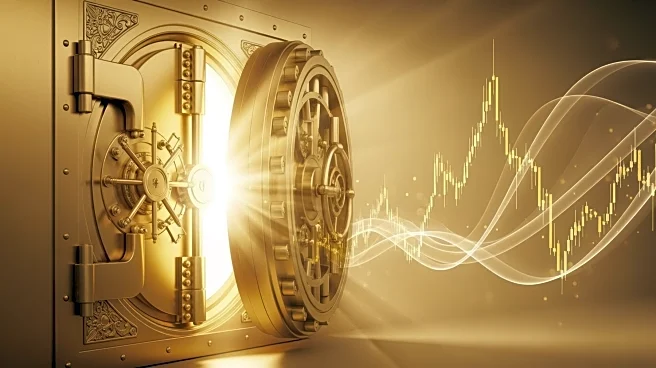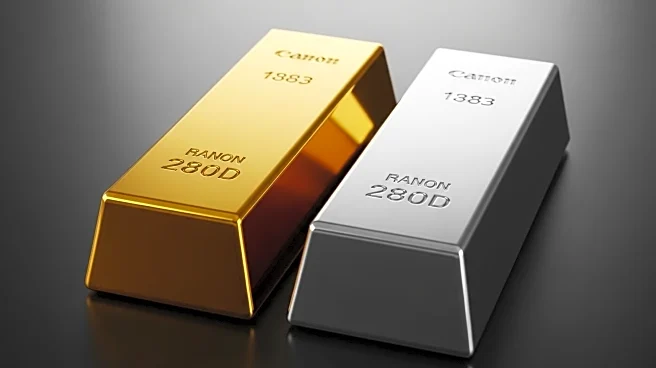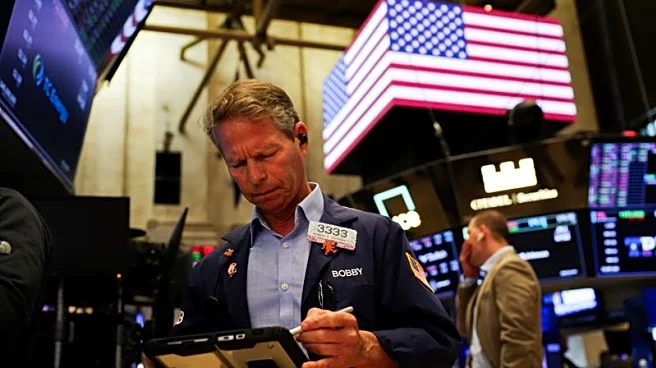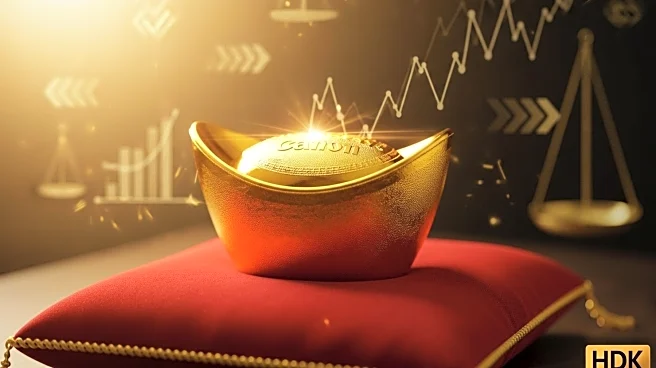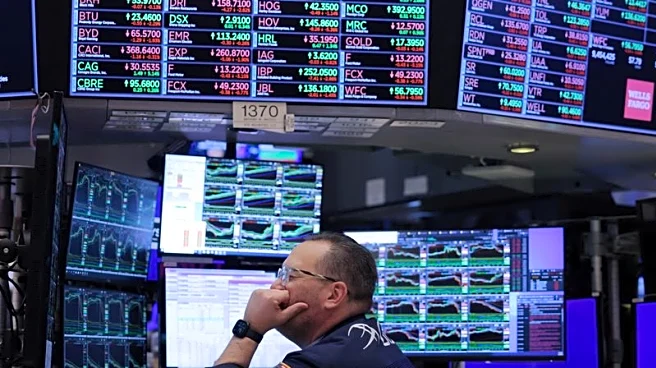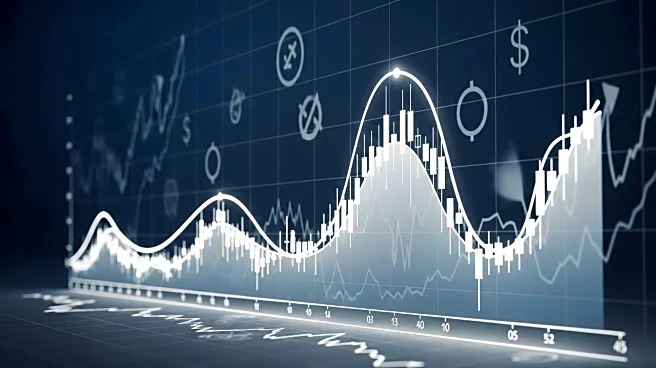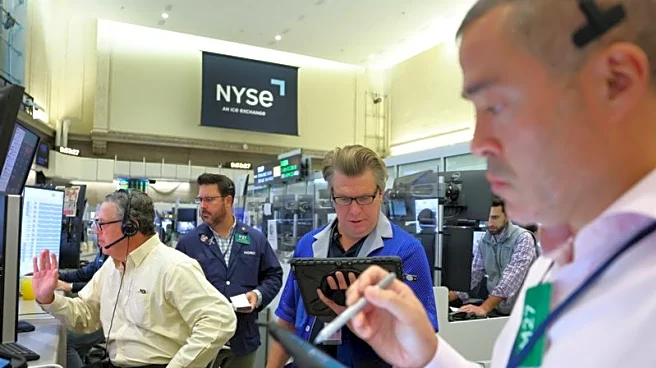What's Happening?
Gold prices have reached a new milestone, surpassing $4,200 per ounce for the first time. This surge is attributed to a combination of factors including heightened geopolitical tensions, expectations of interest
rate cuts, and increased central bank purchases. The spot gold price rose by 1.6% to $4,206.59 per ounce, while U.S. gold futures for December delivery increased by 1.4% to $4,222.30. Analysts suggest that the ongoing U.S.-China trade tensions are prompting investors to diversify their portfolios by investing in gold, a traditional safe-haven asset. The Federal Reserve's dovish stance, as indicated by Chair Jerome Powell, has also contributed to the dollar's decline, further boosting gold's appeal.
Why It's Important?
The rise in gold prices reflects broader economic uncertainties and investor sentiment. As a non-yielding asset, gold thrives in low-interest-rate environments, making it an attractive option for investors seeking stability amid market volatility. The potential rate cuts by the Federal Reserve could further enhance gold's appeal, as lower rates typically reduce the opportunity cost of holding non-yielding assets. Additionally, geopolitical tensions, particularly between the U.S. and China, are driving investors to seek refuge in gold, which is perceived as a hedge against inflation and economic instability. This trend could have significant implications for global financial markets and investment strategies.
What's Next?
Traders are anticipating further interest rate cuts, with a 25-basis-point reduction expected in October and another in December. These cuts are likely to sustain the upward momentum in gold prices. Moreover, the ongoing U.S. government shutdown, which has disrupted official data releases, may further cloud economic outlooks and influence market dynamics. Investors will continue to monitor geopolitical developments and central bank policies, which could impact gold's trajectory. The possibility of reaching the $5,000 mark remains a topic of speculation among market analysts.
Beyond the Headlines
The surge in gold prices highlights the complex interplay between economic policies, geopolitical events, and investor behavior. As central banks diversify away from the U.S. dollar, gold's role as a global reserve asset may strengthen. This shift could have long-term implications for currency markets and international trade dynamics. Additionally, the focus on gold underscores the challenges faced by policymakers in balancing economic growth with inflation control, particularly in a low-rate environment.


